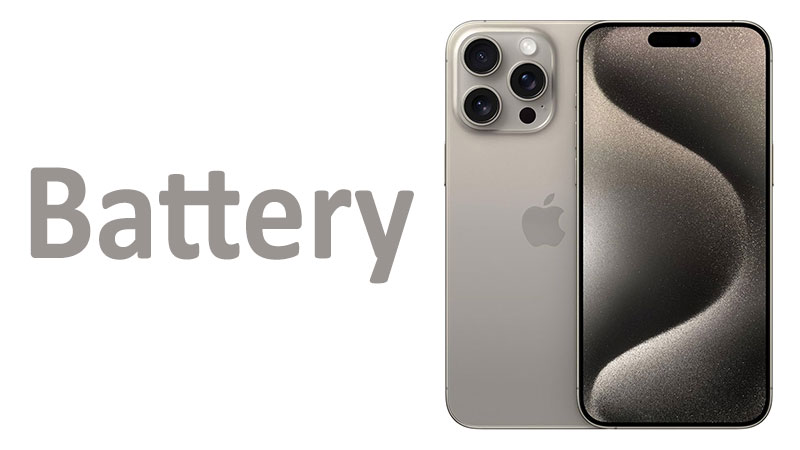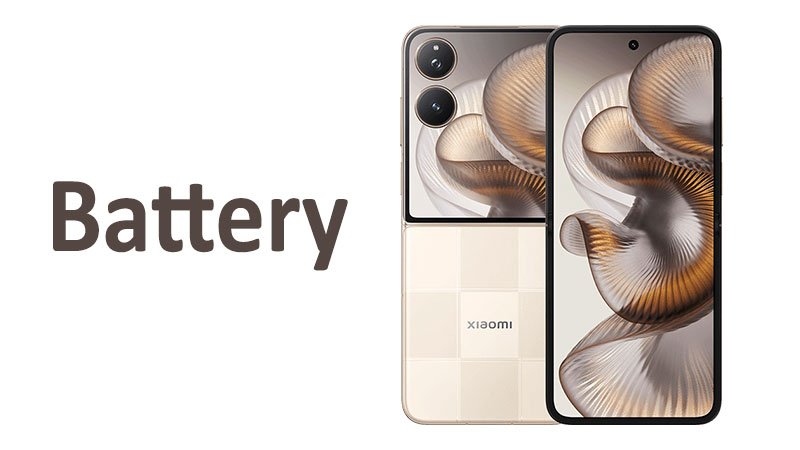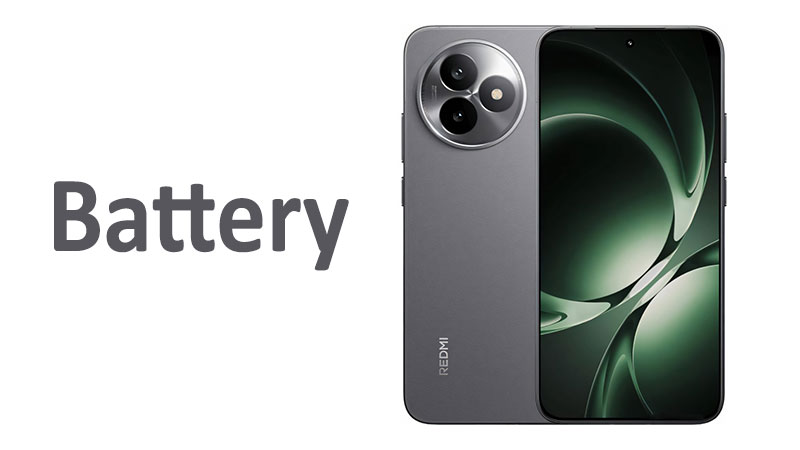The Apple iPhone 15 Pro Max battery system represents the pinnacle of Apple’s mobile power engineering. Understanding its capacity, charging speeds, and real-world performance is essential. This detailed analysis provides a comprehensive look at the device’s lithium-ion power core. We explore how Apple leveraged its internal components and new universal charging standards. This article will help readers make an informed decision regarding the iPhone 15 Pro Max power solution.
The Power Core: Capacity and Technical Specifications
The iPhone 15 Pro Max must power a large display and a demanding processor. Therefore, its internal battery is the largest Apple offers in a flagship phone. This component determines overall daily usability and endurance.
Exact Capacity Specifications
The Apple iPhone 15 Pro Max utilizes a high-capacity lithium-ion energy cell. Its precise capacity measures 4441 mAh. This significant size is what allows the device to achieve its best-in-class endurance ratings. Apple often favors internal efficiency over maximum capacity. However, the Pro Max delivers a large capacity combined with software optimization. This blend targets users who demand maximum runtime. The large battery is a primary reason for the device’s size and weight.
Comparison with the Preceding iPhone 14 Pro Max
The iPhone 14 Pro Max featured a 4323 mAh battery. The 15 Pro Max, with its 4441 mAh cell, is a modest increase. This represents a capacity growth of approximately 2.7 percent. This small physical bump is important but not revolutionary. The true leap in the Apple iPhone 15 Pro Max battery life comes from the new silicon. The increase in capacity combines with major efficiency gains. This leads to a longer and more consistent user experience.
The Efficiency Factor: A17 Pro Chip
The A17 Pro chip is central to the phone’s exceptional endurance. This powerful processor is built using a highly advanced 3-nanometer manufacturing process. Smaller transistors use less energy to perform the same calculations. This efficiency is critical for power management. The chip draws substantially less power during light tasks and standby mode. This preserves the 4441 mAh capacity for demanding activities. The synergy between the large physical battery and the efficient processor creates leading battery life. It is the core competitive advantage of this flagship device.
Hardware Design for Battery Longevity
Apple engineered the internal structure of the phone for better thermal management. Controlling heat is vital for extending battery lifespan. Excessive heat accelerates the degradation of the lithium-ion cell. The A17 Pro chip and its surrounding components dissipate heat effectively. This careful design ensures the battery remains cooler during intensive use and fast charging. This focus on heat management directly contributes to the long-term health of the iPhone 15 Pro Max battery.
Wired Charging: Speed and USB-C Implementation
The transition to a universal USB-C port is the most obvious external change. This port dictates the wired power delivery standards for the iPhone 15 Pro Max. It replaces the proprietary Lightning connector of previous models.
Fast Charging Protocol: Power Delivery 2.0
The iPhone 15 Pro Max supports the USB Power Delivery standard, specifically PD2.0. This is the protocol the phone uses to negotiate power from a compatible adapter. The device can rapidly draw power up to a certain wattage. Apple officially advertises that the device can reach 50% in 30 minutes. This benchmark requires a separate 20W or higher power adapter. The PD2.0 standard ensures safe and reliable high-speed charging.
Wired Charging Speed Analysis
Reaching 50% in half an hour is a strong selling point for many users. This speed provides a quick top-up before leaving the house. The actual peak wattage the iPhone 15 Pro Max draws hovers slightly above 20W, depending on conditions. However, the 50% in 30 minutes metric is the most consistent and marketed claim. The phone intelligently adjusts its power draw during the charging cycle. This prevents overheating and preserves battery health. This careful approach contrasts with some competitors.
The Charging Curve and Battery Protection
Understanding the charging curve is important for user expectations. The rapid 50% charge occurs when the battery is nearly empty. As the charge level climbs past 80%, the rate slows dramatically. This deliberate slowdown is an essential measure. It prevents thermal stress and high-voltage damage to the 4441 mAh cell. Therefore, the final 20% can take significantly longer than the initial charge. This is standard practice in modern battery management systems. Users should not worry about the slower rate above 80%.
Specialized Comparison with Android Rivals
The wired charging speed is competitive within the premium market. However, it is not the absolute fastest available. High-end Android smartphones, such as those from Samsung and Xiaomi, often boast charging speeds of 45W, 65W, or even over 100W. These rivals can achieve a full 100% charge in a shorter time. If iPhone 15 Pro Max charging speed is paramount, some Android models offer an edge. Apple’s choice reflects a trade-off. They prioritize long-term battery integrity over the fastest possible time to 100%.
Pros and Cons of Wired Charging
Advantages of Wired Charging:
- Universal Connector: The USB-C port improves compatibility with other devices and accessories. This is a massive convenience for travel.
- Reliable Speed: The 50% in 30 minutes speed is a decent baseline for fast charging needs. It minimizes downtime effectively.
- Battery Preservation: The moderate wattage and controlled charging curve promote better long-term battery health.
Disadvantages of Wired Charging:
- Separate Purchase Required: The necessary 20W+ power adapter is not included with the phone. This adds a hidden cost to the device.
- Slower Peak Power: It lags behind the extreme peak charging speeds offered by many competing Android flagships. This means a full charge takes longer.
The Wireless Ecosystem: MagSafe and Qi2
Wireless charging provides a seamless, convenient way to keep the large 4441 mAh battery topped up. The iPhone 15 Pro Max supports multiple wireless standards. This offers excellent flexibility for the user.
15W Magnetic Charging via MagSafe
MagSafe is Apple’s primary magnetic wireless charging solution. It uses an integrated ring of magnets in the back of the phone. These magnets ensure perfect alignment with a MagSafe charger. Perfect alignment is required for peak power delivery and efficiency. The iPhone 15 Pro Max can achieve up to 15W of power using a certified MagSafe accessory. This matches the phone’s maximum consistent wired charging rate. MagSafe remains the simplest and most reliable way to charge the device wirelessly at high speed.
The Advent of 15W Qi2 Support
The iPhone 15 Pro Max introduced support for the new, open Qi2 standard. This standard incorporates magnetic alignment, mirroring MagSafe technology. The device is capable of 15W charging over any Qi2-certified accessory. This capability significantly expands the range of fast 15W wireless charging options. This is excellent news for consumers seeking more affordable third-party chargers. It is important to note that this full 15W speed over Qi2 required the iOS 17.2 update. Users should ensure their software is up-to-date for optimal performance.
Standard Qi and Efficiency
The phone is also compatible with older, non-magnetic Qi pads. This is the most widespread wireless charging standard globally. However, power is limited to a maximum of 7.5W when using these older pads. The lack of magnetic alignment leads to efficiency losses. It also makes achieving the sweet spot for charging more difficult. Standard Qi is fine for bedside overnight charging. However, it is too slow for quick daytime top-ups.
Wireless Comparison: Speed vs. Reliability
The iPhone 15 Pro Max’s wireless system emphasizes magnetic reliability. Competitors may use non-magnetic high-wattage wireless solutions. However, the 15W magnetic system provides a foolproof experience. The connection is instant and consistent. This consistency is more valuable than theoretical peak speeds. Furthermore, the expansion to Qi2 ensures broad industry support for the magnetic 15W standard. This makes the iPhone 15 Pro Max battery easy to charge in various environments.
Reverse Charging and Power Flexibility
The new USB-C port opens the door to a subtle, yet useful feature: reverse wired charging. This capability transforms the iPhone into a miniature power source for other small gadgets.
The 4.5W Auxiliary Feature
The iPhone 15 Pro Max supports 4.5W reverse wired charging. This low wattage means the phone can provide power to another device via a USB-C cable. It is a one-way power transfer from the phone’s large energy cell to a smaller accessory. This feature is not intended for charging another smartphone. Its low output makes it an auxiliary power function.
Practical Uses and Limitations
The 4.5W reverse feature is perfectly suited for low-power Apple products. These include accessories like the Apple Watch or a pair of AirPods. Users can top up these smaller devices in an emergency. This is particularly useful when traveling with limited access to power outlets. The phone’s 4441 mAh battery provides ample power for this task. However, users must be aware of the limitations. Charging a large device will drain the Pro Max battery quickly. It is best used for emergency top-ups of tiny accessories. It is a feature focused on convenience, not core power delivery.
The Power-Sharing Ecosystem
This capability highlights the new flexibility of the USB-C port. It allows the iPhone 15 Pro Max to interact with its ecosystem in new ways. The phone becomes a central hub for all personal electronics. This small 4.5W feature improves the overall utility of the device. Buyers should understand that this is a niche function. They should not rely on it as a primary charging method for other devices. The primary goal of the large battery is to power the phone itself.
Real-World Endurance and Usage Scenarios
The true measure of the Apple iPhone 15 Pro Max battery is its performance in daily life. This flagship model consistently achieves outstanding endurance results. It is often cited as a leader in its category.
Benchmark Battery Life Performance
Apple publishes official endurance estimates for specific media consumption tasks. The iPhone 15 Pro Max is rated for:
- Video Playback: Up to 29 hours. This is an industry-leading figure.
- Video Streaming: Up to 25 hours. This figure is excellent for long-haul flights or road trips.
- Audio Playback: Up to 95 hours. This provides days of continuous music listening.
These numbers demonstrate the efficiency of the A17 Pro chip. They also show the power of the large 4441 mAh cell. Users consistently report two days of light use. They easily achieve one full day of extremely heavy, demanding usage. This is a critical factor for professional and power users.
Impact of the Always-On Display and Gaming
The always-on display is a popular feature on the Pro Max. It provides glanceable information without activating the main screen. However, this feature does consume power. The A17 Pro chip minimizes this impact, but the drain is present. Similarly, high-end mobile gaming is a significant battery stressor. The chip’s powerful GPU draws considerable current during extended gaming sessions. Even with this drain, the large battery ensures long, uninterrupted gameplay. The overall iPhone 15 Pro Max battery life remains exceptional even under stress.
Specialized Comparison: 15 Pro Max vs. 15 Pro Endurance
The difference in battery life between the two Pro models is noticeable. The standard iPhone 15 Pro has a smaller 3274 mAh cell. This results in shorter real-world endurance. The iPhone 15 Pro Max consistently lasts several hours longer under the same conditions. Buyers prioritizing absolute, non-negotiable longevity should choose the Pro Max. The Max model is the undisputed choice for maximum screen-on time. This is the single biggest factor distinguishing the two Pro phones.
Optimization and Battery Health Settings
Users have tools to manage and extend their battery life. The iOS operating system provides a comprehensive Battery Health menu. This menu tracks the maximum capacity of the battery over time. Furthermore, Apple introduced an optimization feature. This feature allows users to cap the charge at 80%. This action significantly reduces the chemical stress on the battery. It is a highly recommended practice for users who often charge overnight. Utilizing these features can add years of optimal performance.
Pros and Cons of the Power System
The Apple iPhone 15 Pro Max offers a power system with many strengths. However, it also has specific drawbacks. A balanced review must consider both sides.
Key Advantages
- Exceptional Endurance: The large 4441 mAh capacity delivers market-leading, multi-day battery life for many users. This is the main draw of the Pro Max model.
- A17 Pro Efficiency: The advanced 3nm chip maximizes the battery’s potential. It offers superior power management and standby time.
- Dual 15W Wireless: Support for MagSafe and Qi2 ensures fast, reliable 15W wireless charging compatibility. This offers flexibility in accessory choice.
- USB-C Universal Port: The shift standardizes connectivity. This simplifies charging for users with multiple modern devices.
- Auxiliary Power: The 4.5W reverse wired feature is a useful tool for charging small accessories in a pinch.
Key Limitations
- Size and Weight: The large battery contributes to the phone’s substantial physical size and weight. This is a trade-off for the increased power capacity.
- Wired Speed Gap: The maximum wired charging speed lags behind many high-wattage Android competitors. This may frustrate users switching from those fast-charging devices.
- Adapter Not Provided: Users must purchase a 20W or stronger charger separately. This requirement adds an unexpected cost.
- Longer Full Charge Time: The emphasis on battery health means the time from 80% to 100% is significantly extended. A full charge takes longer than rivals.
Buyer’s Guide: Essential Takeaways
The iPhone 15 Pro Max is the clear choice for users prioritizing battery life. The endurance is outstanding, providing peace of mind during long days. Buyers must remember to purchase a suitable 20W+ power brick. They also need to utilize the Battery Health settings to ensure long-term performance. The Pro Max delivers a reliable, optimized, and enduring power solution. It is the best option for users who cannot compromise on uptime.
Conclusion
The Apple iPhone 15 Pro Max battery system is a triumph of efficiency and capacity. The 4441 mAh battery, when combined with the A17 Pro chip, delivers truly remarkable, best-in-class endurance. This ensures the phone easily handles the demands of power users and professionals. The charging protocols provide excellent versatility.
The inclusion of the USB-C port is a significant step forward for convenience. Wired charging offers a fast 50% top-up in 30 minutes. Meanwhile, the dual 15W MagSafe and Qi2 support establishes a reliable high-speed wireless ecosystem. Although the maximum wired speed trails some competitors, Apple’s focus on battery longevity is a sound design choice. It protects the investment of the user over time.
The iPhone 15 Pro Max stands out for its sustained performance. It is the definitive choice for users who demand absolute maximum uptime. This phone offers the ultimate combination of power and portability. It guarantees excellent performance throughout long days of demanding use. The power system is intelligently managed. It is one of the phone’s greatest strengths.
FAQ
What is the exact battery capacity of the iPhone 15 Pro Max?
The iPhone 15 Pro Max features a large internal lithium-ion battery with a 4441 mAh capacity. This is the largest battery in the standard iPhone 15 lineup.
How quickly does the iPhone 15 Pro Max fast charge with a cable?
It supports Power Delivery 2.0 (PD2.0) fast charging. It can reach approximately 50% of its capacity in just 30 minutes when you use a 20W or higher USB-C power adapter.
Does the iPhone 15 Pro Max support the new Qi2 magnetic charging?
Yes, the device fully supports the magnetic-alignment Qi2 standard. It charges wirelessly at speeds up to 15W, but you need the iOS 17.2 update for this full speed.
How long does the iPhone 15 Pro Max last for video playback?
Apple rates the iPhone 15 Pro Max for up to 29 hours of continuous video playback. This makes it an industry leader in media consumption endurance.
Can the iPhone 15 Pro Max charge other phones or devices?
It supports 4.5W reverse wired charging via the USB-C port. This feature allows it to charge small accessories like AirPods or an Apple Watch, but it is too slow to effectively charge another smartphone.



